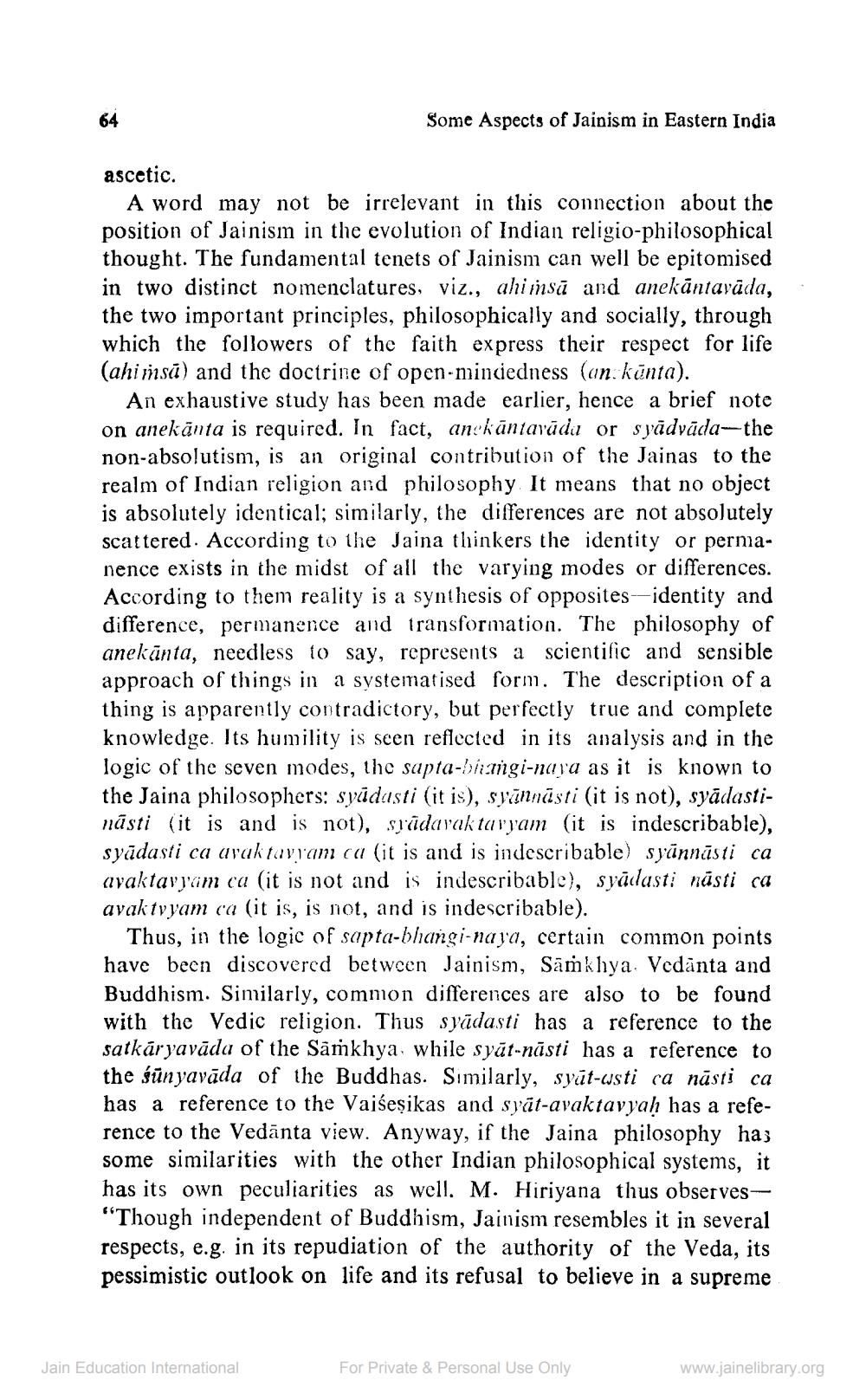________________
Some Aspects of Jainism in Eastern India
ascetic.
A word may not be irrelevant in this connection about the position of Jainism in the evolution of Indian religio-philosophical thought. The fundamental tenets of Jainism can well be epitomised in two distinct nomenclatures, viz., ahiinsū and anekāntavāda, the two important principles, philosophically and socially, through which the followers of the faith express their respect for life (ahisă) and the doctrine of open-mindedness (on kunta).
An exhaustive study has been made earlier, hence a brief note on anekānta is required. In fact, anekāntarādu or syādvāda-the non-absolutism, is an original contribution of the Jainas to the realm of Indian religion and philosophy. It means that no object is absolutely identical; similarly, the differences are not absolutely scattered. According to the Jaina thinkers the identity or permanence exists in the midst of all the varying modes or differences. According to them reality is a synthesis of opposites--identity and difference, permanence and transformation. The philosophy of anekunta, needless to say, represents a scientific and sensible approach of things in a systematised form. The description of a thing is apparently contradictory, but perfectly true and complete knowledge. Its humility is seen reflected in its analysis and in the logic of the seven modes, the sapta-biangi-nara as it is known to the Jaina philosophers: syūdasti (it is), synnasti (it is not), syādastinásti (it is and is not), srādavaktaryam (it is indescribable), syādasti ca avaktavram ca (it is and is indescribable) spannāsti ca avaktavy'aim ca (it is not and is indescribable), syādasti nästi ca avak tvyam ca (it is, is not, and is indescribable).
Thus, in the logic of sapta-bhangi-naya, certain common points have been discovered between Jainism, Samkhya. Vedānta and Buddhism. Similarly, common differences are also to be found with the Vedic religion. Thus syādasti has a reference to the satkār yavāda of the Samkhya, while syāt-nūsti has a reference to the sūnyavāda of the Buddhas. Similarly, syāt-usti ca nāsii ca has a reference to the Vaiseșikas and svät-avaktavyah has a reference to the Vedānta view. Anyway, if the Jaina philosophy ha; some similarities with the other Indian philosophical systems, it has its own peculiarities as well. M. Hiriyana thus observes - "Though independent of Buddhism, Jainism resembles it in several respects, e.g. in its repudiation of the authority of the Veda, its pessimistic outlook on life and its refusal to believe in a supreme
Jain Education International
For Private & Personal Use Only
www.jainelibrary.org




